Guys Talking Women Wearing Shoulder Pads
We speak to the creators of Adult Swim's new stop-motion animated comedy about what the medium adds to melodrama, how to make rain, and its various influences.
by Kambole Campbell
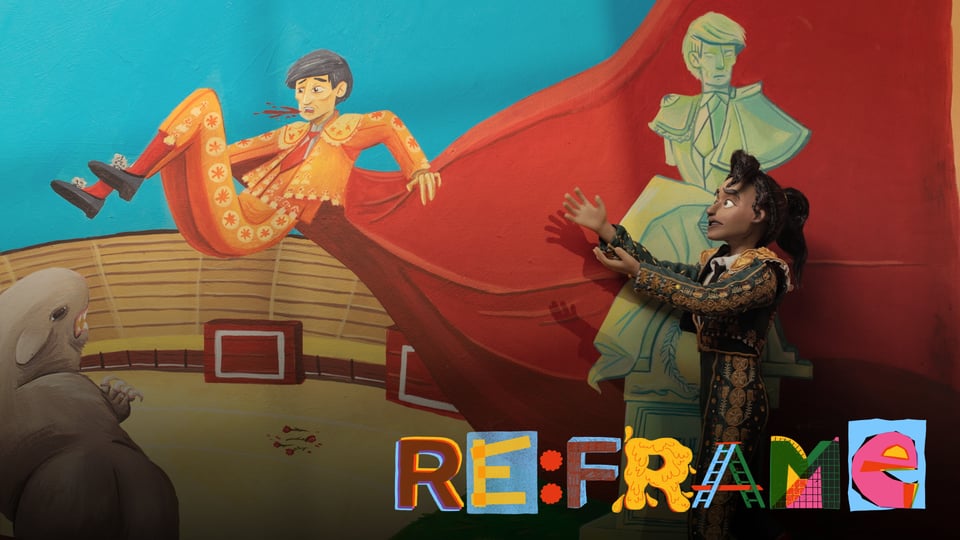
In a previous interview with the creators of Women Wearing Shoulder Pads – a stop-motion animated comedy which lovingly parodies the melodrama of Pedro Almodovar – series co-creator and writer Gonzalo Cordova (Tuca & Bertie, Adam Ruins Everything) said to me that camp and sincerity are inextricable from each other. The series, set in Quito, Ecuador in the 1980s, finds its sincerity in disarming ways: through delivery of incredibly flowery, poetic lines of dialogue or in a character's acceptance of a flawed maternal relationship through elaborate performance art. The show follows a web of eccentric characters (all women) spun around Marioneta, a Spaniard and ruthless businesswoman making a new ploy to get rich, by taking a swing at the industry around gigantic guinea pigs (and I mean really giant, larger than a person), both used as meat and as entertainment.
It’s hysterically funny too, taking every chance it can at creating something silly, even as it treats its characters’ emotions seriously: like how a moment of heartbreak sees a character ride away on a motorbike, before doing a series of increasingly outrageous stunts. Such absurdity is strikingly different from the other work of Cinema Fantasma, a Mexican animation studio also known for Frankelda's Book of Spooks (the basis of Mexico's first stop-motion animated feature film, the gorgeous I Am Frankelda - more on that from our pals at Animation Obsessive). We spoke with Cordova, along with Cinema Fantasma founders Roy and Arturo Ambriz, about the making of the show, what stop-motion adds to melodrama, and why the medium might arguably be the future of storytelling.
What made stop-motion the ideal medium through which to tell the story of Women Wearing Shoulder Pads?
Gonzalo Cordova: I'm gonna throw to the brothers in a second, but I just want to say that I think that one of the reasons that it was stop-motion was because it's a melodrama – telling it with these puppets and miniatures immediately adds another element of absurdity. We were really trying to use the medium and the art of stop-motion itself to try and do something that I hadn't seen before… but I'm really curious what the brothers have to add to that.
Arturo Ambriz: I think about moments in which we have these characters who are getting to know each other, with layers of personality where they're trying to hide some aspects of themselves, but revealing some aspects through their conversation, their clothes, the way they interact with each other. When you add the layer of stop-motion, everything is heightened. What is dramatic becomes more dramatic, because you know that there's someone animating those puppets.
When there's something comedic, it becomes funnier, because you know there's a lot of people trying to maneuver all these pieces, so I think that everything is more extreme. That's what we found. And we didn't know this before working on this project, but when you watch the final episodes, this is the feeling that we get.
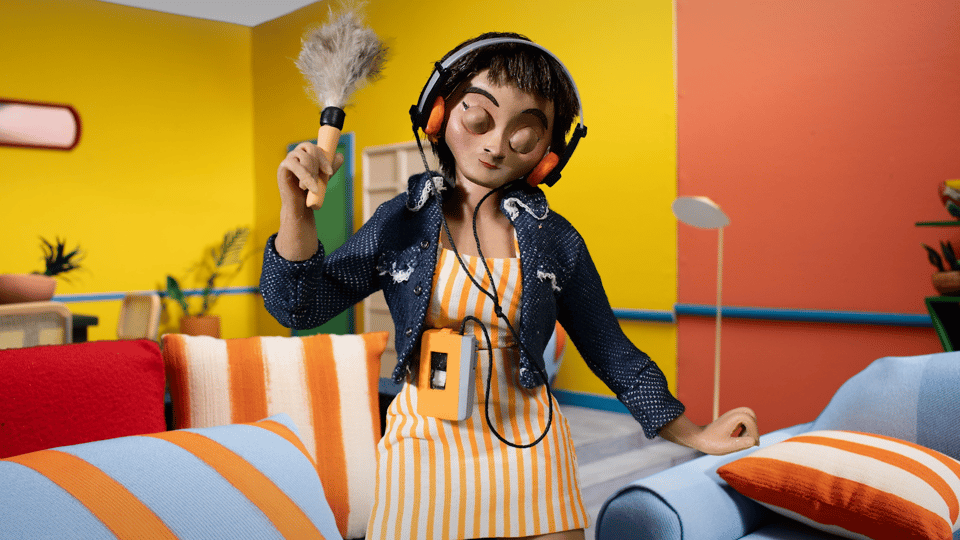
Roy Ambriz: I'm in love with stop-motion, and I get more in love every day. I think, for me, it's the future of storytelling. In these days, where artificial intelligence can do a lot of things from just putting in a prompt, I think that stop-motion is an animation medium that celebrates the creative process.
But in order to achieve that, you have to be in communication with a lot of people, you have a lot of hands touching textiles, sculpting, painting, and that makes a special connection that is sometimes lost in other mediums. Gonzalo had to travel here to Mexico. We had lunch with him. He was able to be on the sets, to wrap the pictures, to see the designs, to touch them.
I think that human connection is shown in this production – I think that connection fixes so many problems in this world, so I think stop-motion is really cool.
Speaking of the human touch – throughout the show there's shots of a human hand manipulating objects, and then it would cut back to an animated puppet again. I wondered if this was a choice made for practical reasons, but as you said, this is quite an absurd show, so the decision to switch mediums made sense regardless.
GC: That came from the pilot, and that came from just me instinctively thinking, "oh, this'll be easier and cheaper, it'll be faster, you just use a hand". I don't know if it was. I think it might have actually been harder! At the time I understood the process so much less, and now I realize it probably would have been easier to just use the puppet and the set that's already there.
So then we had to track down art, things that would match, and then match cut it.
But for me, the main reason I did it was because it was funny, and it tickled me, and it interested me, and I didn't really understand why. As the series went on, I realized that it was something that called attention to the animation, snapping out of it makes you realize that you are watching stop-motion. And that's the whole joke of the show, this melodrama that can take itself seriously, and then zoom out and show that we're making it.
So I was trying to use the stop-motion medium to really comment on the scripts themselves: they're a little heightened and artificial. So I think that it's just a wonderful reminder, seeing human hands reminds you that someone made it.
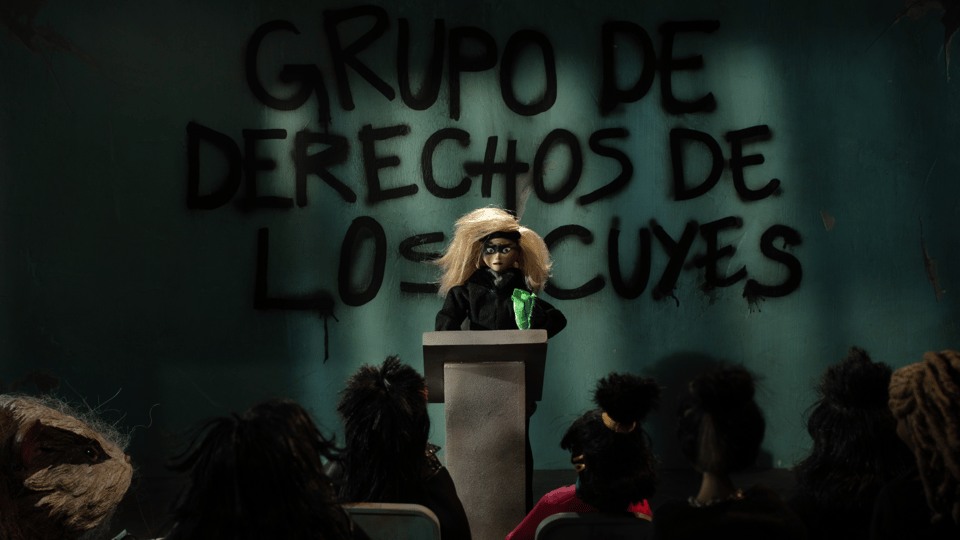
With all the constant reminders that these are puppets, it makes sense that one of them is called Marioneta.
GC: [laughs] Yes!
AA: Gonzalo, one of his biggest talents is to name characters. He's amazing.
GC: Yeah, I loved naming them, I think most of the main cast I named on my own. We had a writer's room later, but I loved naming characters.
Pick a name!
GC: Yeah, I mean, all of those… I like 'Doña Quispe', because 'doña' is just like 'Mrs'. or 'Ma'am' or whatever, so she literally doesn't have a first name. I just thought that was so funny to just use that, like, that I knew that English speakers wouldn't pick up on that, but that Spanish speakers would. I like that name quite a lot. I like Espada Muleta [NOTE: this is a matador character going through an existential crisis, and they are literally called "Sword" and "Cape"]. It's fun coming up with weird combinations.
Going back to the craft, beyond the beautiful costumes, I was also loving all the visual effects: paper for fire, gel for water, cotton for smoke and so on. Was there a practical effect that you were particularly pleased with from production?
RA: I think that one of the most impressive scenes in the whole show is in this scene when it's raining, and Marioneta and Espada have this really important conversation between the two of them.
To achieve the rain, we had to use a lot of different techniques, and there is no kind of manual where you can look and see how exactly to do rain in stop-motion… so we had to figure out everything. How the puddles were made, it's really different from the water on the faces of the characters, there's a different effect on the clothing, and the little splashes in the ground.
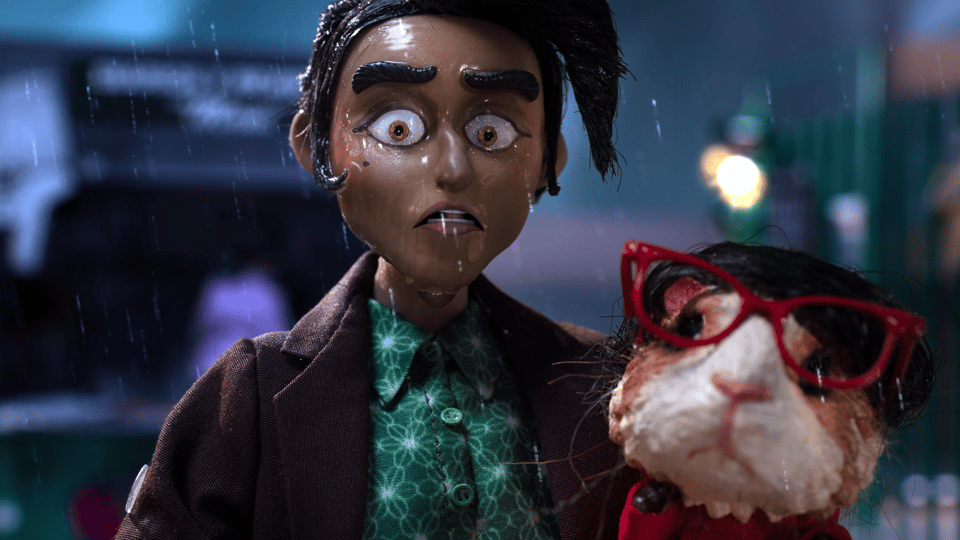
There are different techniques with gel, silicon, and actual water used. So, I think that's one of my favorite parts of this job: to figure out how to do something. Another one of Gonzalo's specialties is to break the rules and the conventions of everything. I think that that's why he also breaks the aesthetic with live-action.
But he was pushing, asking, "How can we do this effect? How can we do this?" And at the end, everything serves a comedic purpose. But also when you have to recreate life on a smaller scale, you see more details of real life, and maybe you understand it a little bit more…
GC: When Roy says "Gonzalo was like, how can we do this? How can we do…" I think I knew so little about stop-motion, I was asking literally! "How does this work? What am I doing?"
In our last interview, we spoke about your live-action influences like Leave Her to Heaven and Almodovar. Though you've said that you were still learning about the actual production of animation at the beginning, I was wondering if there were animated influences that you had in mind going into Women Wearing Shoulder Pads.
GC: There were a lot! This show is almost a collage of a million different things, live-action things, but animation was also really important. There's a lot of references to Sally Cruikshank's work, like, there's, like, in the trailer, the daggers come in out of the eye. That comes from Quasi at the Quackadero. I just really love that show.
In episode six, they go to the 'Pueblo de Mamitas', which is an all-women town of outcasts who have an entire industry, which is a clear rip-off of Princess Mononoke… I almost said it in a Spanish accent, sometimes it's hard for me to switch. But that came from one of our writers, River Ramirez, asking some questions about different kinds of people that can represent Ecuador more completely.
I started to think about Princess Mononoke, and we built this town around that. There were others, Ranma 1/2 is maybe one of the other biggest influences on this show. There's a school uniform which resembles Akane's.
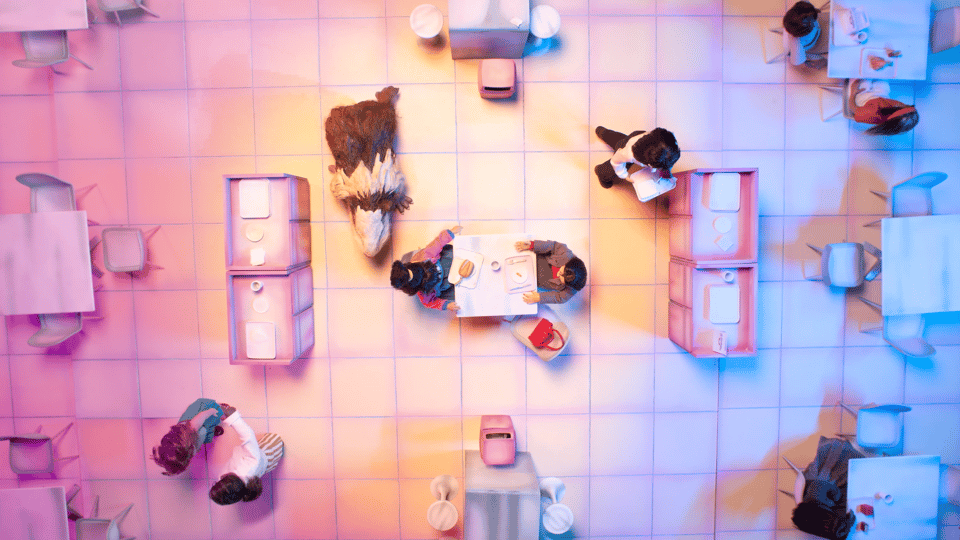
But also because that show was done in the late 80s, early 90s, I was really looking at those aesthetics, and I also found out that it is a huge show in Mexico. So a lot of the studio staff, the animators and designers, were very aware of what I was talking about. It was almost a way for us to communicate. So that show was really helpful.
That reminds me – was Espada wearing a Captain Tsubasa sweater in the church scene? The contrast between the costuming and the set was really funny to me.
AA: Yeah, it's that, Captain Tsubasa.
GC: Okay, I think I grew up with it called something else.
Arturo Ambriz: In Spanish it's called Super Champions.
GC: Yes! Yes, it was a reference to a half-forgotten show I watched when I was four or five. When I was talking to Ana Coronilla, our designer [NOTE: Ana also worked as an episode director], I said I sort of remembered it and she knew exactly what I was talking about. Anime is obviously very influential in Latin America, and I think some of those references just came from memories, being aware of these shows as a kid.
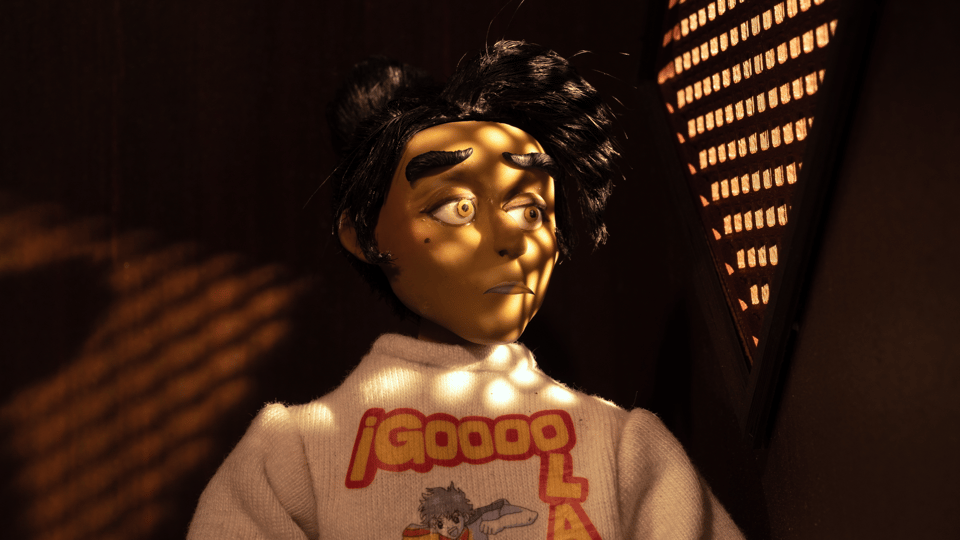
RA: I think it's really great for this show, because sometimes when people think about Latin American people or Mexicans, they always think that we are just like, in a desert with big hats-
GC: [laughs]
RA: -but no! You see people, kids here who love anime-
AA: Dragon Ball is more Mexican than it is Japanese, I think.
RA: Yeah, exactly, because it used to be heard in Open TV here, so everybody's a fan of anime, and you see little kids with Dragon Ball shirts or cards, I don't know, probably not legal ones. So, that's the spirit of Latin America, and that's what we wanted to capture with help of Gonzalo in this show.
I think that's a nice way to put it. When you first described the show it sounded very personal to you, especially with the costume design inherited from your mother, though it seems like it's become a very international show in the process.
GC: Yeah, it is a collaboration between so many different countries. We've got actors from Spain, from Ecuador, and Mexico. Obviously, the entire studio is working in Mexico City, but the people who worked on that show came from different Latin American countries as well.
I had an entire team of people who understood their cultural specificities, so they understood what I was going for, and that was important, that they understood, like, "yes, we do know that there is a difference", so that they can watch out for these things and really help me nail that.
And we had an Ecuadorian consultant, Pancho Viñachi, who worked with Mireya Mendoza [NOTE: the show's voice director, who also appears as a voice themselves] on the translations of the scripts, because I wrote them in English. I had a team getting me that cultural specificity, and I don't think I could have done this alone. I'm not arrogant enough to think I could have ever captured a specific Latin American country alone!
Women Wearing Shoulder Pads airs weekly on Adult Swim starting at midnight, August 17, with episodes on HBO Max the following day.